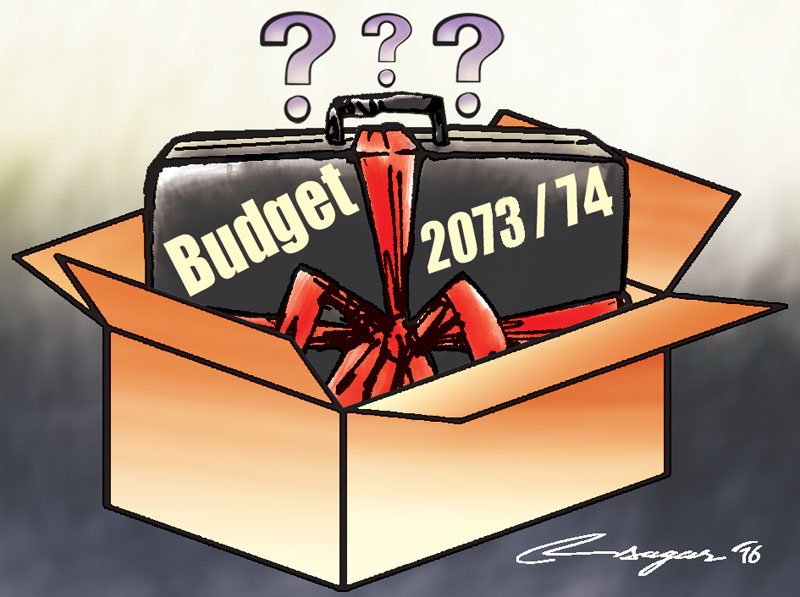Treasury surplus at all-time high of Rs 180bn
- Govt had spent only 39.53pc of total annual budget as of Tuesday
Kathmandu, May 4
The state’s treasury surplus has hit an all-time high of around Rs 180 billion, as the government has not been able to utilise available budget on time.
As of yesterday, the government spent only 39.53 per cent, or Rs 323.91 billion, of the total annual budget of Rs 819.47 billion, show the data of the Financial Comptroller General Office. Worse, capital spending stood at Rs 42 billion, which is only 20.11 per cent of the total allocation of Rs 208.88 billion.
Since more than nine months of this fiscal have elapsed, it is almost sure that the government will not be able to use the entire budget by the end of this fiscal.
This slackness in spending is one of the main reasons that has inflated the government’s treasury.
On top of this, Nepal Rastra Bank (NRB), on behalf of the government, has been collecting debt from the market, as per its plan to raise Rs 88 billion in loan from the country.
“As of now, we have raised almost 95 per cent of the debt that we had proposed to collect,” Min Bahadur Shrestha, head of the Public Debt Management Department at NRB, told The Himalayan Times.
All this money is now sitting idle in the government coffers.
The government’s inability to spend the budget, especially capital budget, on time hinders development activities, such as construction of physical infrastructure, which is needed to give impetus to economic growth. Also, slackness in public spending creates liquidity crunch in the banking sector.
In mid-April, interbank lending rate jumped to as high as 5.5 per cent during intraday trading, as a huge chunk of funds remained locked in the state coffers. The rates have now moderated and stood at 3.66 per cent yesterday.
Considering these repercussions, many have long been calling on the government to enhance its fund absorptive capacity and overhaul the public financial management system, so that capital spending could go up.
The government must ramp up capital spending because the country faces a big infrastructure gap.
As per the World Bank, Nepal needs to invest up to $18 billion in infrastructure projects by 2020 to avoid possible binding constraint on economic growth.
Of the total amount, up to $7 billion should go to the energy sector, up to $5.5 billion to the transport sector, up to $2.6 billion to the water supply and sanitation sector and up to $2.3 billion to irrigation sector.
If the government starts investing in these sectors, it will start crowding-in private investment because public spending works as a catalyst in raising private investment in Nepal.
Once private investment starts going up, demand for credit will also go up, which will help the banking sector to attain organic growth.






